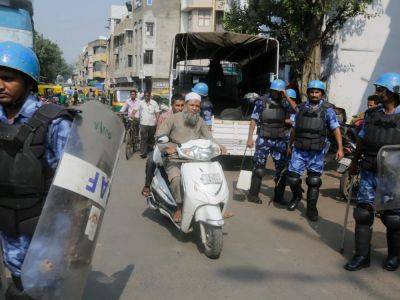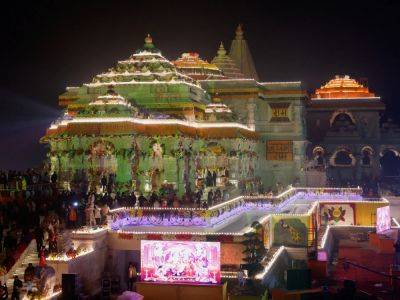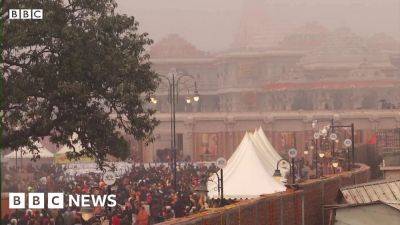Why is India’s Ram temple in Ayodhya controversial?
Governing party BJP’s Prime Minister Modi will be consecrating Ram Mandir on Monday, more than three years after laying its first stone.
India’s stock market is shut for the day. Central government offices are only open for half the day. Neighbourhood watch parties have been organised across the country. And tens of millions of Indians are tuned into one event: the consecration of a temple to the Hindu god Ram in the city of Ayodhya.
On Monday, just past noon local time, Indian Prime Minister Narendra Modi will join priests to inaugurate the temple, whose launch in many ways also serves as the start of his campaign to be re-elected for a third term in office in national elections due to be held between March and May.
The trust in charge of the temple, whose construction is still under way, has invited an estimated 7,000 people — politicians, leading industrialists, sports stars and other public figures.
But while Modi’s Bharatiya Janata Party (BJP) government has pitched the event as a national celebration, the temple’s history is grounded in what many have dubbed one of modern India’s darkest chapters — one that has shaped the country’s politics and that cracked open deep religious fault lines in its society.
Here’s a look at the tortured history of the spot where the temple is being built — and the controversies surrounding it.
The temple is being built on a contentious piece of land in the northern Indian city of Ayodhya, at a spot that many Hindus believe was the birthplace of Ram, a much-worshipped god who in the religion epitomises the victory of good over evil.
But until the morning of December 6, 1992, it was the Babri Masjid, a mosque built in 1528 and named after the Mughal king Babur, that stood at that







